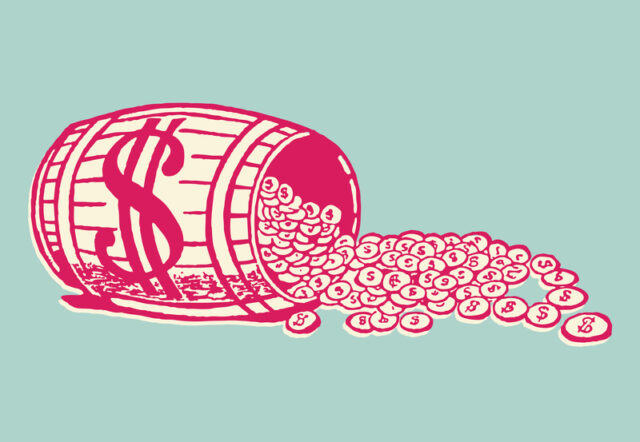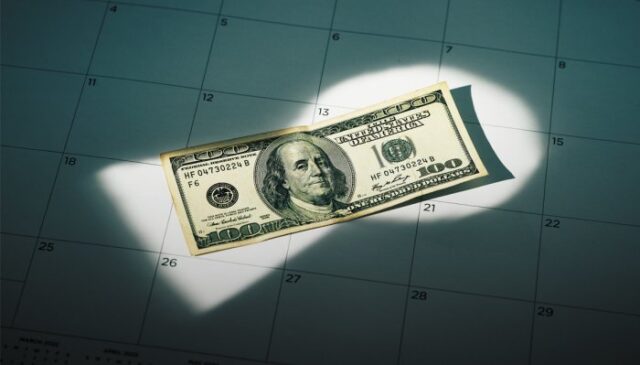
It can be pretty effortless to spend beyond your means on activities such as food, drinks, and entertainment while residing in the big city. After this and living expenses, it might not leave you with much of anything at all to set aside for the future, and because of this, people can start feeling like they’re living paycheck to paycheck. If this sounds like you, or you simply want to be better at spending and saving money, this article will give you some effective tips to help you achieve this and reach your financial goals.

1. Calculate How Much You Earn
It can be challenging to save money if you’re not fully aware of the income you are earning each pay period.
This is especially relevant for people who have a tendency to spend their checks as soon as they receive them. It’s not easy to think long-term if you’re always working with a short-term mindset.
Sometimes this isn’t by choice, though – rent, bills, and credit card payments are a few examples of things that will consume most of your finances, but it’s still essential to know what you have leftover.
Ask yourself, how much do you earn each month after taxes? This can give you a bigger picture of what you can work with.

2. Know Where Your Money Is Going
While it’s crucial to understand how much money you are making accurately, it’s also equally important to have an idea of your current spending habits so that you know exactly where you can cut from.
Don’t try to estimate this by trying to do the math in your head. Instead, try to get real data from your bank statements and other financial documents to truly see how you spend your money.
Many people become surprised because they are unaware of how much they spend, especially on more leisurely expenses like dining out and having fun. These are good to do every so often – people should be able to enjoy themselves, but it needs to be done carefully.
Spending $10 for a fast food meal doesn’t seem intimidating at first glance, but if you do it very often, it really adds up. Now, if you start including entertainment and other consumptions, it can be shocking to see how much you might be overspending, but this is important for making positive change.

3. Set Some Goals
Once you’re able to determine what you typically spend your money on and for how much, you can start changing these habits. Having goals to strive for will help with this.
They can virtually be anything you want them to be – you might want to have savings available when you retire, have funds in case of an emergency, build up your kids’ college tuition fund, or perhaps create a budget for fun but more costly things like vacations or purchasing a new vehicle or home.
Paying down debt is also another great goal to have because you can reduce the amount of interest you’ll have to pay. Having this extra money can make a difference and add some more flexibility to your budget.
Additionally, being able to set aside some money to make investments can also set you up for better financial security. However, to do this wisely, you’ll need to be able to see what you can comfortably afford.

4. Make The Necessary Adjustments
After creating some achievable goals for yourself, you can start to decide where you need to reduce your spending so that you can reach them.
For instance, returning to the idea of dining out or fast food because this is a common area where people spend money because it’s very convenient in our busy and fast-paced society these days, transitioning to cooking and eating at home can allow you to make your car or credit card payments easier.
Sure, making a list and shopping for ingredients and preparing your own meals takes time, but it saves a lot of money in both the short and long term, and it’s one that most people can apply immediately.
You can probably find other ways to cut spending like this that can make a significant difference, even if it feels like a small change. Some examples like reducing your utility costs and canceling subscriptions you don’t utilize can give you some more leeway in your budget for more important expenses.

5. Track Your Spending
Finally, you’re probably not going to go through all of this effort to set up a budget and not keep track of how you spend – it’s good practice to find ways to record your transactions so you can see what funds you have available to allocate towards other things.
One way to do this is by finding a template that makes it easy to label and organize your expenses, and luckily, there are plenty of them available.
For example, the 50/30/20 budgeting strategy, which Senator Elizabeth Warren coined, is one of the most popular ones out there, and you can find sheets that help you jot everything down on paper or on your devices.
For those unfamiliar with the 50/30/20 budgeting plan, it’s a method that simplifies your spending into three categories: needs, savings, and wants, and 50%, 30%, and 20% will be assigned to each of these respective areas in that order.

Want To Further Your Life Even More?
How-to guides are some of the most helpful types of information, and you can find them for just about anything.
If you are looking to find additional ways to change your life, BetterHelp offers many resources like this one that can show you exactly how you can achieve specific goals, especially if it pertains to your happiness and wellbeing.
Conclusion
Your financial health is essential, and even what might be perceived as a little change can lead to profound results. Hopefully, by following this advice, you’ll be able to set up a budget that you can stick to, which can help you get to where you want to be, financially. Many of your goals might take considerable time, but if you plan right and spend wisely, you’ll probably be astounded at how much you can save and how much more efficient it is with a strict budget.














